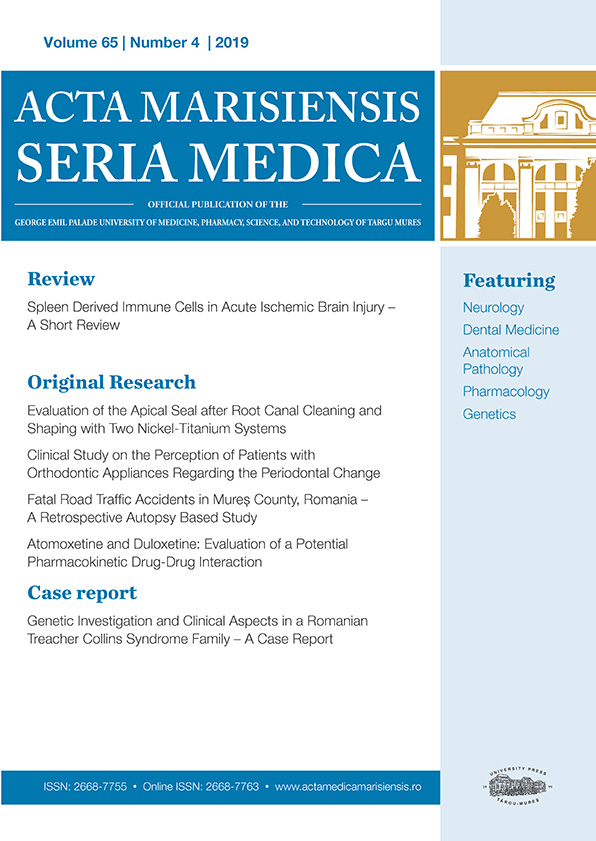Hereditary Hemochromatosis
Retrospective Study on Clinical Data from Emergency Country Hospital Mures
Abstract
Objective: Hereditary hemochromatosis, or primary hemochromatosis, is a recessive genetic liver disorder caused by iron accumulation in tissues. This study evaluates patients with hereditary hemochromatosis to determine correlations between clinical and laboratory data. Methods: The data analyzed in this study was gathered from the discharge records from 2019 to 2021 of the Gastroenterology Department of the Mures Country Emergency Clinical Hospital. 15 patients with hemochromatosis were sampled during the studied period. Results: Hepatic cirrhosis is present in 67% of the studied group of patients. Positive correlations were obtained between serum iron and alkaline phosphatase (r = 0,8536), between serum iron and lactate dehydrogenase(r=0,7381), and between serum iron and urea (r = 0,79). Positive, strong correlation between ferritin and serum iron(r=0,7719), GOT (r=0,778) and GPT (r=0,6108). total bilirubin and direct bilirubin (r = 0,85), between total bilirubin and GOT (r = 0,68) and GPT (r = 0,82). Conclusions: Excess iron stored is influencing liver function trough reactive oxygen species, while serum iron can cause damage to other tissues such as myocardium or kidneys. Treatment for hemochromatosis includes phlebotomies, and iron chelation with Deferoxamine.
Copyright (c) 2022 Victor Sigmirean

This work is licensed under a Creative Commons Attribution 4.0 International License.









